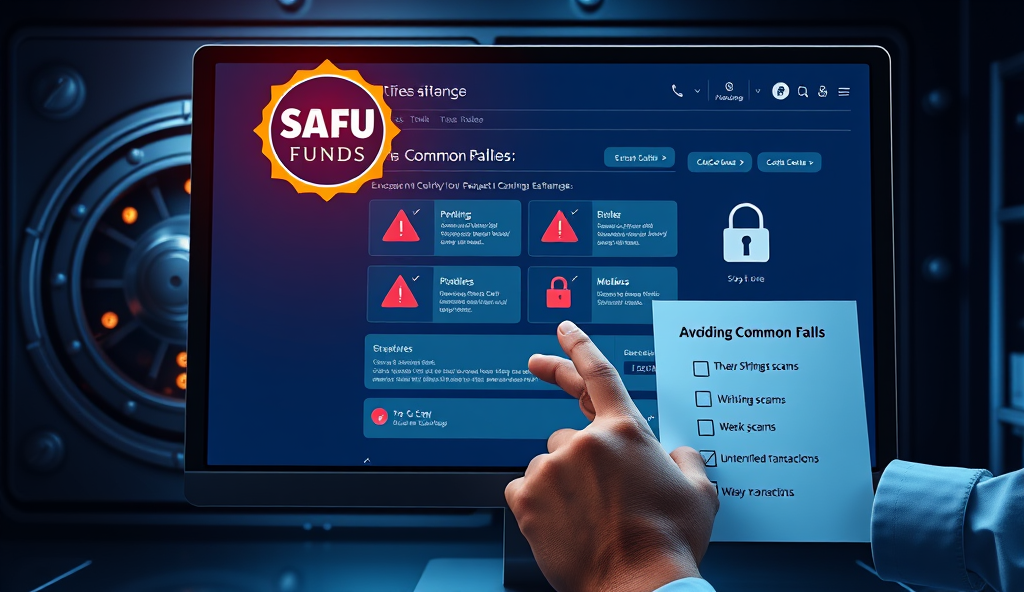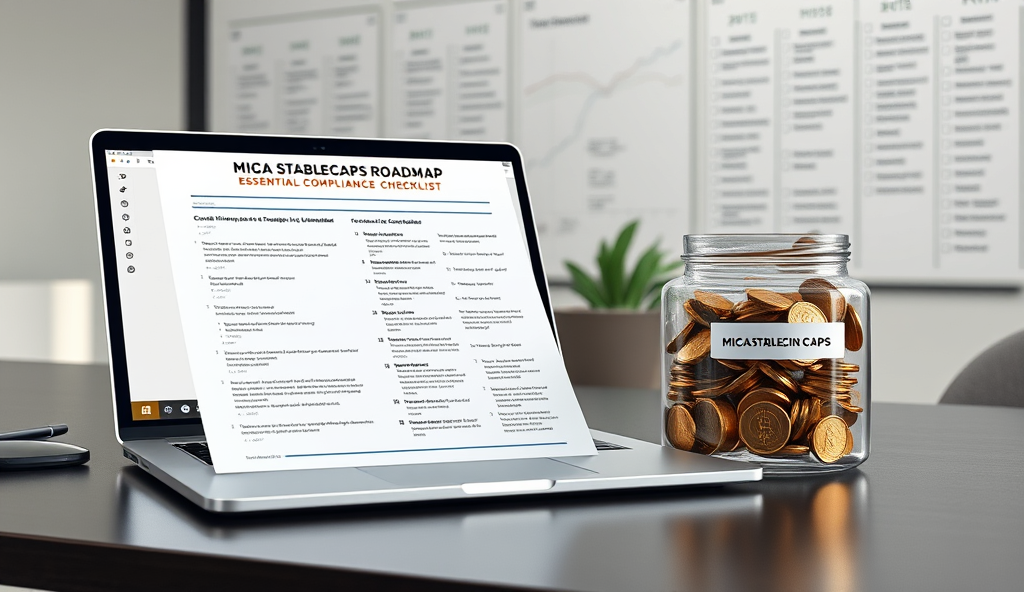Introduction to SAFU Funds and Secure Crypto Exchanges
As cryptocurrency trading grows, securing funds on exchanges has become a top priority for traders globally. SAFU (Secure Asset Fund for Users) funds, pioneered by Binance in 2018, offer a safety net by allocating a portion of trading fees to protect users during unforeseen events like hacks or system failures.
This proactive approach addresses one of the biggest concerns in crypto trading—exchange vulnerabilities.
Leading exchanges now implement SAFU-like mechanisms, with some platforms reserving up to 10% of trading revenue for user protection. For example, KuCoin’s Insurance Fund covers losses during extreme market volatility, demonstrating how exchanges are evolving beyond basic security measures.
These innovations provide traders with added confidence when selecting platforms for secure crypto trading.
Understanding how SAFU funds work is essential for evaluating exchange safety, as they represent a critical layer in protecting crypto assets. The next section will explore the mechanics of SAFU funds and why they matter for traders seeking reliable platforms.
Key Statistics

What Are SAFU Funds and Why They Matter
SAFU (Secure Asset Fund for Users) funds offer a safety net by allocating a portion of trading fees to protect users during unforeseen events like hacks or system failures.
SAFU funds act as an emergency reserve, typically holding cryptocurrency assets equivalent to 10% of an exchange’s trading fees, designed to compensate users if security breaches or operational failures occur. Binance’s SAFU fund, for instance, has reimbursed users during past incidents, proving its effectiveness in restoring trust after unexpected losses.
These funds matter because they shift risk from traders to exchanges, creating a financial incentive for platforms to prioritize security and transparency. Unlike traditional banking safeguards, SAFU funds operate independently, often stored in cold wallets to prevent unauthorized access during cyberattacks.
For traders, evaluating an exchange’s SAFU policy is as crucial as checking its liquidity or fees, since it directly impacts asset protection. The next section will examine how SAFU funds integrate with other key features of secure crypto exchanges.
Key Features of a Secure Crypto Exchange
SAFU funds act as an emergency reserve typically holding cryptocurrency assets equivalent to 10% of an exchange’s trading fees designed to compensate users if security breaches or operational failures occur.
Beyond SAFU funds, top-tier exchanges implement multi-layered security protocols like two-factor authentication (2FA) and biometric logins, with 95% of platform hacks in 2023 targeting exchanges lacking these measures. Cold storage for majority assets, as seen with Coinbase’s 98% offline reserves, drastically reduces hot wallet exposure to breaches.
Transparency metrics such as monthly proof-of-reserves audits, like Kraken’s real-time attestations, build trust by verifying solvency without compromising user privacy. Exchanges with ISO 27001 certification, including Bitfinex, demonstrate adherence to global cybersecurity standards through third-party audits.
Liquidity depth and insurance partnerships, such as Gemini’s $200M coverage with Aon, complement SAFU funds by ensuring swift recoveries during market volatility. The next section details how traders can verify an exchange’s SAFU fund authenticity before depositing assets.
How to Verify if an Exchange Has SAFU Funds
Exchanges with ISO 27001 certification demonstrate adherence to global cybersecurity standards through third-party audits.
Traders should first check the exchange’s official documentation, as platforms like Binance publicly disclose SAFU fund allocations in quarterly transparency reports. Independent blockchain auditors like Armanino often verify these reserves, with exchanges like KuCoin providing real-time attestations matching their claimed holdings.
Cross-reference exchange announcements with on-chain data, as SAFU funds are typically held in dedicated wallets with verifiable transaction histories. For example, Bybit’s SAFU wallet address is publicly listed, allowing users to track fund movements via explorers like Etherscan.
Finally, prioritize exchanges with third-party certifications like ISO 27001, which often include SAFU fund verification in their audit scope. The next section highlights top platforms that meet these criteria, combining SAFU protection with the security measures discussed earlier.
Top Crypto Exchanges with SAFU Funds in 2023
Traders should first check the exchange’s official documentation as platforms like Binance publicly disclose SAFU fund allocations in quarterly transparency reports.
Binance leads with its $1 billion SAFU fund, backed by quarterly attestations from Mazars and on-chain verification of reserve wallets. KuCoin follows closely, allocating 1% of trading fees to its SAFU pool while providing real-time audits through Armanino’s blockchain transparency tools.
Bybit and OKX also stand out, with publicly trackable SAFU wallets holding over $200 million combined, alongside ISO 27001 certifications for security compliance. These platforms exemplify the best practices for SAFU crypto trading by merging fund protection with rigorous third-party validation.
For traders prioritizing security, these exchanges offer a balance of transparency and safeguards, setting the stage for the next section’s guide on safely navigating platforms with SAFU funds.
Steps to Safely Trade on a Crypto Exchange with SAFU Funds
Experts recommend keeping only 10-20% of holdings on exchanges for active trading mirroring strategies used during the Celsius crisis.
Begin by verifying the exchange’s SAFU fund transparency, checking on-chain wallet addresses like Binance’s publicly audited reserves or KuCoin’s real-time Armanino reports. Ensure the platform allocates sufficient capital—such as Bybit’s $100 million SAFU reserve—and provides quarterly attestations from reputable auditors like Mazars.
Limit exposure by diversifying assets across multiple SAFU-backed exchanges, avoiding over-concentration on a single platform despite its security measures. Enable two-factor authentication (2FA) and whitelist withdrawal addresses, complementing SAFU protections with personal security practices.
Monitor the exchange’s compliance updates, such as OKX’s ISO 27001 certifications, and stay informed about fund-recovery policies in case of breaches. These steps create layered security, bridging the gap between platform safeguards and proactive risk management—essential before exploring common risks in the next section.
Common Risks and How to Avoid Them
Even with SAFU-backed exchanges, risks like exchange hacks or insolvency persist, as seen in the 2022 FTX collapse where $8 billion in user funds vanished. Mitigate this by cross-referencing exchange reserves with third-party audits and avoiding platforms with unclear SAFU fund allocation, sticking to transparent exchanges like Binance or KuCoin.
Phishing attacks remain prevalent, with 2023 reports showing a 40% increase in crypto-related scams targeting exchange logins. Combine SAFU protections with hardware wallet storage for long-term holdings and always verify website URLs before entering credentials, as even insured funds may take time to recover after breaches.
Operational risks like withdrawal freezes can trap assets during market volatility, as witnessed during the Celsius Network crisis. Diversify across multiple SAFU-protected exchanges and maintain a portion of funds in self-custody wallets to ensure liquidity access regardless of platform issues—a strategy we’ll expand on in the upcoming FAQs.
FAQs About SAFU Funds and Secure Exchanges
How quickly can SAFU funds cover losses after an exchange breach? Binance processed reimbursements within 7 days during its 2019 hack, but recovery times vary by exchange—always check historical incident responses before depositing.
Combine this with hardware wallet storage for critical assets, as even insured reimbursements may face delays during complex investigations.
Are all SAFU-protected exchanges equally secure? Transparency differs significantly, with top platforms like KuCoin publishing quarterly proof-of-reserve audits while others lack public verification.
Cross-reference exchange reserves with third-party data from Nansen or Glassnode to avoid platforms with opaque SAFU fund allocation, as discussed earlier regarding FTX’s collapse.
What percentage of assets should stay on SAFU exchanges versus self-custody? Experts recommend keeping only 10-20% of holdings on exchanges for active trading, mirroring strategies used during the Celsius crisis.
This balances liquidity access with security, transitioning logically into our final guidance on selecting optimal platforms.
Conclusion: Choosing the Best Crypto Exchange with SAFU Funds
Selecting a crypto exchange with SAFU funds requires balancing security, liquidity, and regulatory compliance, as highlighted in earlier sections. Platforms like Binance and KuCoin demonstrate how SAFU funds mitigate risks, with Binance allocating 10% of trading fees to its emergency reserve.
Prioritize exchanges with transparent SAFU policies, cold storage practices, and regular audits to ensure your assets remain protected. For instance, Bybit’s SAFU fund covers up to $100 million in potential losses, offering traders an added layer of security.
As the crypto landscape evolves, staying informed about exchange safety measures remains critical for long-term asset protection. The next section will explore advanced strategies for maximizing security beyond SAFU funds.
Frequently Asked Questions
How can I verify if an exchange's SAFU fund is legitimate?
Check the exchange's transparency reports and use blockchain explorers like Etherscan to track their publicly listed SAFU wallet addresses.
What percentage of my crypto should I keep on a SAFU-backed exchange?
Experts recommend 10-20% for active trading while storing the majority in hardware wallets like Ledger for long-term security.
Do all major crypto exchanges offer SAFU fund protection?
No—prioritize platforms like Binance or KuCoin that publicly disclose SAFU allocations and undergo third-party audits by firms like Armanino.
Can SAFU funds fully cover losses during a major exchange hack?
Coverage varies by platform—always review the exchange's SAFU cap (e.g. Bybit's $100M) and supplement with personal insurance through providers like Coincover.
How often should I check my exchange's SAFU fund status?
Monitor quarterly audit reports and set alerts for reserve updates using tools like Glassnode to track wallet movements in real-time.





